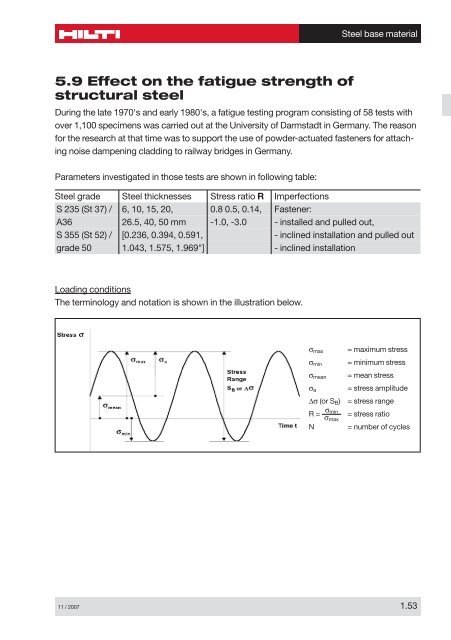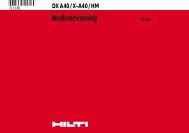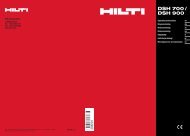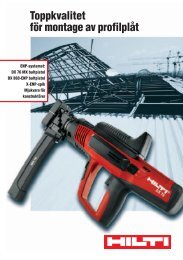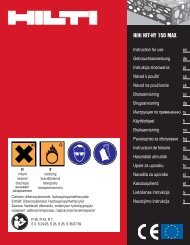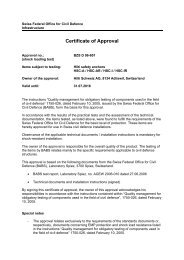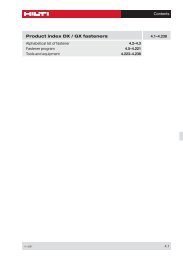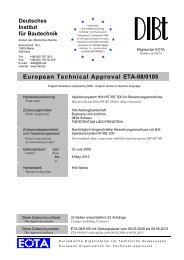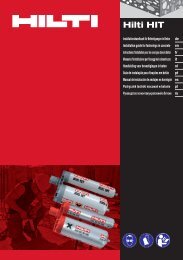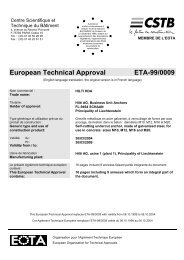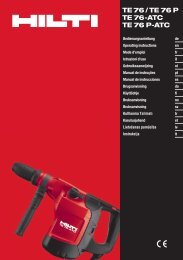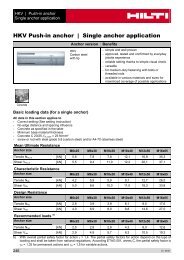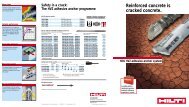00 Contents - Hilti Svenska AB
00 Contents - Hilti Svenska AB
00 Contents - Hilti Svenska AB
You also want an ePaper? Increase the reach of your titles
YUMPU automatically turns print PDFs into web optimized ePapers that Google loves.
5.9 Effect on the fatigue strength of<br />
structural steel<br />
Steel base material<br />
During the late 1970's and early 1980's, a fatigue testing program consisting of 58 tests with<br />
over 1,1<strong>00</strong> specimens was carried out at the University of Darmstadt in Germany. The reason<br />
for the research at that time was to support the use of powder-actuated fasteners for attaching<br />
noise dampening cladding to railway bridges in Germany.<br />
Parameters investigated in those tests are shown in following table:<br />
Steel grade Steel thicknesses Stress ratio R Imperfections<br />
S 235 (St 37) / 6, 10, 15, 20, 0.8 0.5, 0.14, Fastener:<br />
A36 26.5, 40, 50 mm -1.0, -3.0 - installed and pulled out,<br />
S 355 (St 52) / [0.236, 0.394, 0.591, - inclined installation and pulled out<br />
grade 50 1.043, 1.575, 1.969"] - inclined installation<br />
Loading conditions<br />
The terminology and notation is shown in the illustration below.<br />
11 / 2<strong>00</strong>7 1.53<br />
σmax<br />
σmin<br />
σmean<br />
σa<br />
= maximum stress<br />
= minimum stress<br />
= mean stress<br />
= stress amplitude<br />
∆σ (or SB) = stress range<br />
σmin R =<br />
σmax<br />
= stress ratio<br />
N = number of cycles


